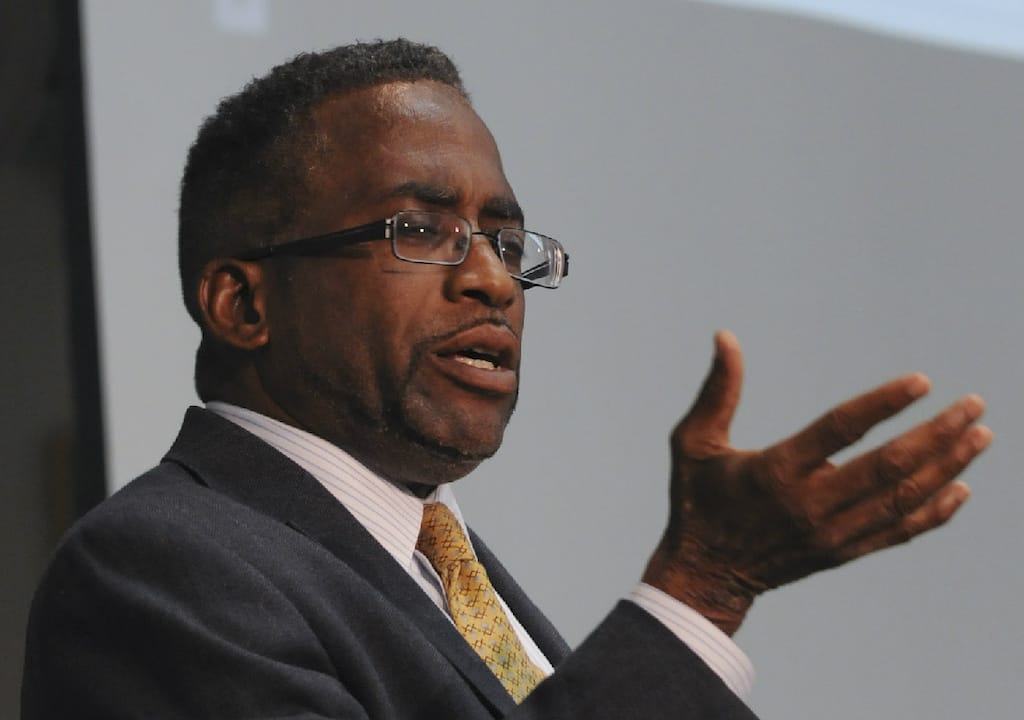Craig Settles: If You Can’t Give Away Free Internet, Consider Telehealth
Settles suggests tactics for communities to effectively deploy telehealth services while marketing the Affordable Connectivity Program.
Craig Settles

Vice President Kamala Harris personally rallied the state governors – “it’s all hands on deck” to sign up more households to the Federal Communications Commission’s Affordable Connectivity Program (ACP). This Friday, the FCC likely will authorize a $100-million grant program to help boost the numbers. The White House went online nationwide to energize community stakeholders and activists.
What’s up? ACP is a free monthly internet program with a $100 subsidy for a computing device. So far, about 12 million households have signed up for ACP. However, the National Telecommunications and Information Administration’s “Internet For All” website estimates there are more than 51 millions ACP-eligible homes. Thirty-nine million homes can be a significant reach.
“ACP adoption has been difficult because there is no money to help those of us who are managing the process and who have the connections to the community,’ says Deb Socia, president and CEO of The Enterprise Center, a local Chattanooga economic development partner. “I have a full-time person just to help get folks signed up, but I had to raise money to do so.”
Hopefully this Friday the FCC will “green light” what they’re calling “Your Home, Your Internet.” Socia and many others can hire more people who know the communities and neighborhoods well. However, the key to increasing participation in the ACP is not more money! Rather, the key is more money spent more wisely.
The great thing about marketing is…it works!
Before community broadband, I did marketing and PR consulting for industry giants such as Lotus Development, Microsoft, and AT&T and a bunch of high-tech startups. These companies knew that a successful marketing tactic was (and still is) to let prospects demo products in a real-world environment. Whether a game or a business technology, demo it.
ACP’s markets are heavily low-income homes. Communities text, back-pack flyers, and bus stop-ads must compete for attention with 6,000 – 10,000 marketing messages per person per day, kids crying, adults whining, racing off to the third job, etc. Parents worrying about where the family’s next meal is coming from, kids worrying about getting shot. What’s more, sizeable portions of the left-leaning residents fear government or incumbent net intrusion, surveillance, or bait-and-switch scams, conservatives seem to distrust anything Democrat-sponsored.
A winning demo? Telehealth. Because everybody gets sick sometimes – low-income folks, a hell of a lot more than everybody else. Often, they’re also responsible for others who are sick. So let “Telehealth and convenient healthcare delivery” be the marketing message that drives ACP.
The Enterprise Center is planning a pilot project involving 1000 free telehealth appointment targeted to one of Chattanooga’s lowest income neighborhoods. They have high incidences of stroke, heart disease, diabetes, and asthma. The pilot includes training, a new Chromebook, and home internet access that residents’ their needs.
Six tactics for communities to deploy telehealth and market the ACP
Here are six tactics that communities can use to deploy telehealth while putting some order, shape, and priority to ACP adoption. Develop statewide media campaigns that build marketing awareness and excitement for community needs assessments for NITA’s BEAD and DEA grant programs.
1. Reinventing the doctor office visit for various healthcare practices, including doctor consults, medical observation, screening, and data gathering and exchange. For example, recruit barbershops, hair salons, churches, and laundromats in African-American neighborhoods where hypertension screening services are delivered, and customers, parishioners, patrons and others then can sign up for ACP and telehealth.
2. Use telehealth to deliver chronic healthcare and home care so the constant appointments and treatments can be made less intrusively at home, or possibly at work. Hospitals, doctor practices, and clinics can prescribe telehealth solutions and give patients material for signing up for ACP and computing devices from an ISP. Some hospitals are giving they are chronic illness patients computing devices.
3. Enhance emergency response to save more lives. Perhaps some of the facilities can treat non-serious patients (those who treat the ER as their primary care physician), and then give them ACP and telehealth paperwork so an ISP can sign up patients.
4. Expand efficiency of mental healthcare delivery. Now might be a good opportunity to pilot program that gives police officers several emergency URLs so they can get mental health professionals on the line to deescalate situations, and direct people with mental health crisis into the ACP when possible. It may not produce huge numbers of ACP sign ups, but it’s great publicity for the ACP and telehealth.
5. Improve senior care and facilitating aging in place. Enabling several senior citizens centers and libraries to deliver a series of appropriate screenings for seniors, followed by demonstrations of telehealth, digital literacy, and ACP sign-ups could be awesome.
6. Reimagining what hospital care can be. Various cities may want to consider equipping two or three public housing units so they can become mobile telehealth clinics.
Next time I will address setting up a campaign to recruit, coordinate, and motivate unofficial community leaders in the implementation of these various tactics. These unofficial leaders carry significant clout in their respective communities – barbershops, hairdressers, local grocery store owners, pastors, libraries etc.
Craig Settles conducts needs analyses, planning, and grant assessments with community stakeholders who want broadband networks and telehealth to improve economic development, healthcare, education and local government.
Broadband Breakfast accepts commentary from informed observers of the broadband scene. Please send pieces to commentary@breakfast.media. The views reflected in Expert Opinion pieces do not necessarily reflect the views of Broadband Breakfast and Breakfast Media LLC. This Expert Opinion was lightly edited to conform with Broadband Breakfast style.









Member discussion